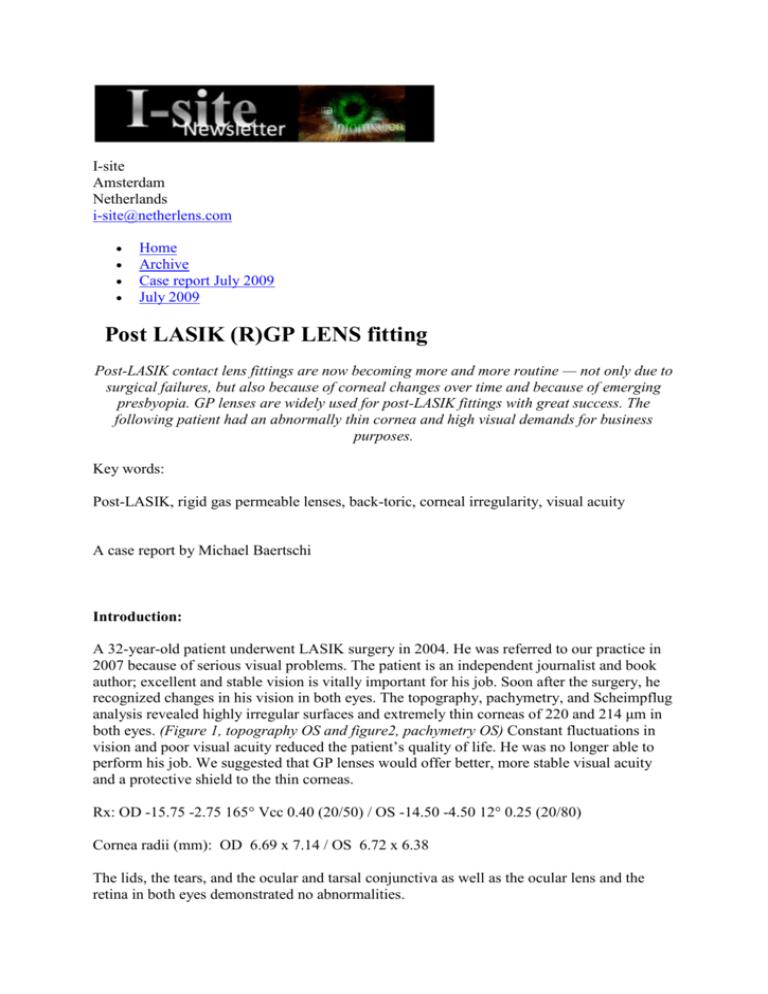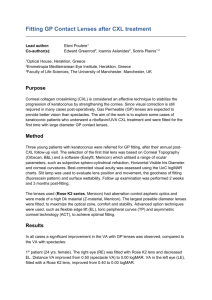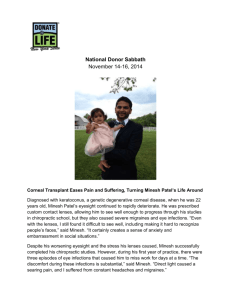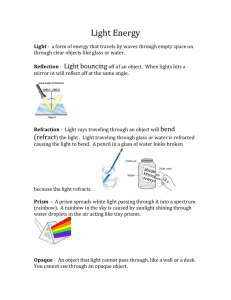june_2009.190103027
advertisement

I-site Amsterdam Netherlands i-site@netherlens.com Home Archive Case report July 2009 July 2009 Post LASIK (R)GP LENS fitting Post-LASIK contact lens fittings are now becoming more and more routine — not only due to surgical failures, but also because of corneal changes over time and because of emerging presbyopia. GP lenses are widely used for post-LASIK fittings with great success. The following patient had an abnormally thin cornea and high visual demands for business purposes. Key words: Post-LASIK, rigid gas permeable lenses, back-toric, corneal irregularity, visual acuity A case report by Michael Baertschi Introduction: A 32-year-old patient underwent LASIK surgery in 2004. He was referred to our practice in 2007 because of serious visual problems. The patient is an independent journalist and book author; excellent and stable vision is vitally important for his job. Soon after the surgery, he recognized changes in his vision in both eyes. The topography, pachymetry, and Scheimpflug analysis revealed highly irregular surfaces and extremely thin corneas of 220 and 214 μm in both eyes. (Figure 1, topography OS and figure2, pachymetry OS) Constant fluctuations in vision and poor visual acuity reduced the patient’s quality of life. He was no longer able to perform his job. We suggested that GP lenses would offer better, more stable visual acuity and a protective shield to the thin corneas. Rx: OD -15.75 -2.75 165° Vcc 0.40 (20/50) / OS -14.50 -4.50 12° 0.25 (20/80) Cornea radii (mm): OD 6.69 x 7.14 / OS 6.72 x 6.38 The lids, the tears, and the ocular and tarsal conjunctiva as well as the ocular lens and the retina in both eyes demonstrated no abnormalities. Figure 1 a+b: Corneal Topography Method/Fitting process: Full corneal GP contact lenses with overall diameters of 11.4 mm were designed to fit over the different refractive and topographical zones. The fitting goal was to cover as much of the cornea as possible for protective reasons, to achieve the best possible centration, and to distribute the adhesion forces over large portions of thicker and more stable corneal areas. The highly irregular surface required a back toric geometry approach of about four diopters. To accomplish this type of fitting, first the flat central corneal radii are used as a reference base curve for the subsequent calculations. Second, the most peripheral radii are measured (using Scheimpflug or Topography) or calculated (sagittal numerical eccentricity). It is very helpful to measure or calculate the sagittal depth, especially in cases of post-LASIK or corneal transplant conditions. The trick is to fit the peripheral areas of the contact lens as closely as possible to the more stable corneal periphery. Reverse geometries are often useful for post-LASIK corneas. In the case of our patient, an “ordinary” toric geometry was ideal. A more complicated toric reverse geometry was not necessary. Figure 2 a+b: Pachymetry During the fitting process, we were constantly challenged with inadvertent air bubbles and mucin deposits, especially beneath the left contact lens (Figure 3, inadvertent air bubbles and figure 4, mucin deposits and cell debris). The pronounced astigmatic irregularities mentioned above caused the bubble formation and mechanical irritations. As is evident in Figure 3, the vertical meridian (at 70°) is much too flat, and even ventilation holes (at 90° and 270°) were not able to prevent the air bubbles. In contrast to the inadequate vertical meridian, the horizontal meridian looks acceptable. Adapting the vertical meridian with a more adequate toric design, in this case four rather than two diopters, improved the fit and reduced the amount of air beneath the lens. (Figure 5: final lens design) The central area in particular is now free of any air bubbles, with a free floating tear exchange and therefore less mucin deposits. The chosen lens material is Boston XO because of its high oxygen permeability and good wetting properties. The Boston Advance lens care system keeps the lenses clean and comfortable all day. The regular use of a specific protein remover, e.g. Liquid Enzymatic Cleaner, is suggested. OD: PERIT-2* Boston XO Ice,n.E.0.45 6.68mm -14.12 dpt OAD 11.4mm, BOZ 6.0mm BC OS: PERIT-4* Boston XO Ice,n.E.0.65 6.63mm -13.37 dpt OAD 11.4mm, BOZ 6.0mm BC The PERIT-2 lens is a lens design with a 2D peripheral toricity. Centrally this lens is spherical, hence one only once BC is available. PERIT-4 has 4D of peripheral toricity. Figure 3: Inadvertent air bubbles Figure 4: Mucin deposits and cell debris Results: This fitting resulted in well tolerated and acceptably centered contact lenses for at least 12-14 hours per day. In cases of longer wearing time of more than 17 hours per day, the patient also wears an Acuvue Oasys lens in a piggyback system. Vcc with the lenses is at least 20/20 in all situations; in some visits a binocular Vcc of 20/18 has been evaluated. Cornea, conjunctiva and lids are fine. Conclusion: With his back-toric GP contact lenses, the patient was able to write three books and has successfully authored many articles in high quality newspapers throughout Europe and Canada. This case demonstrates that GP lenses are often ideal contact lenses for many of our patients and for many different conditions. A retrospective analysis of this patient’s ocular condition before laser surgery indicates possible keratoconus in both eyes. The sister of our patient underwent laser surgery as well, despite the obvious keratoconus in both eyes. Her corneal and visual situation is even worse. Her pachymetry data shows a remaining cornea thickness of only 182 μm. Thanks to her new GP contact lenses, we were also able to give her the promise of a better future. Figure 5: Final lens design Michael Baertschi Switzerland MSOptom., Master Medical Education, FAAO Contact lens specialist and Optometrist Proprietor of the Kontaktlinsenstudio Baertschi, Bern/Switzerland Director of Eyeness AG and Swiss Contact Lens Consulting SWICOLECO President of the INTERLENS Group of Switzerland Adjunct faculty of the New England College of Optometry International lecturer and author I-site Amsterdam Netherlands i-site@netherlens.com








